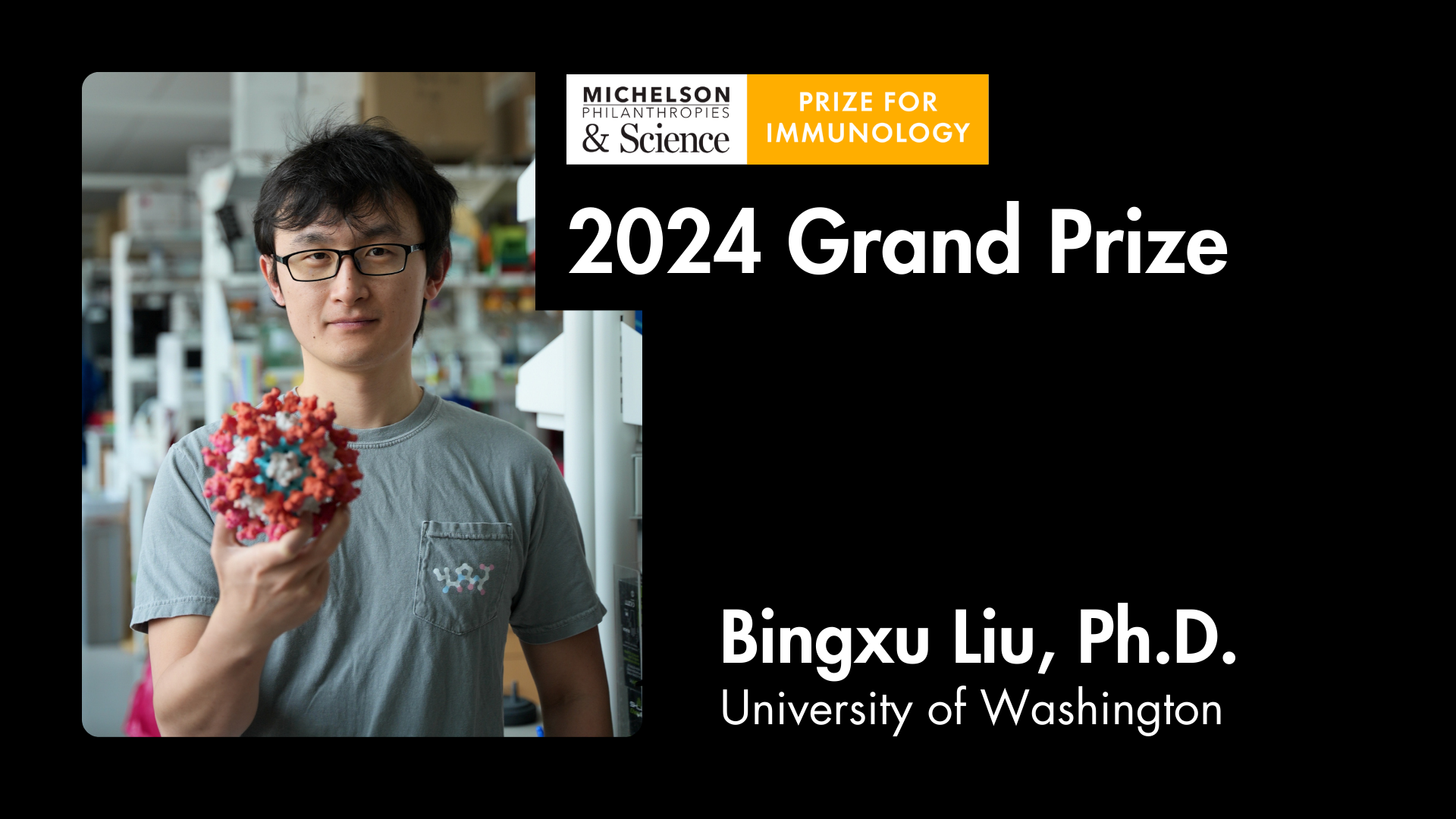Coordinating the War on Pathogens: Dr. Bingxu Liu’s Research on Immune Proteins Wins 2024 Michelson Prize
Growing up in a small village in China, Dr. Bingxu Liu had never met a scientist and didn’t know what their jobs entailed. So he turned to books about scientists, fascinated by stories that explained the process of discovery. “It was always rewarding when they would find a simple principle that can explain a very confusing phenomenon,” he says.
Now a postdoc at the Institute for Protein Design at the University of Washington, Liu has been able to write one of those stories himself through his own research as a student at the Massachusetts Institute of Technology (MIT). His discovery of how certain proteins help the immune system fight pathogens led to his award for the 2024 Michelson Philanthropies and Science Prize for Immunology. Along with the $30,000 prize, Liu’s essay describing his research appears in the print and online editions of Science.
Improving Human Immunity Through Protein Engineering
Dr. Bingxu Liu, 2024 Michelson Philanthropies & Science Prize for Immunology Recipient. Credit: UW Institute for Protein Design
Before starting his postdoc work, Liu received his BS at Zhejiang University and Ph.D. at the Massachusetts Institute of Technology. He was drawn to immunology as a field because of how the system continually changes, both over the course of evolution and over the course of an individual person’s disease. “The immune system is constantly fighting an arms race against pathogen invasion, and that selection pressure gives it the best creativity,” he says. “Studying the immune system can give us clues into how we could engineer living systems to overcome their natural limitations.”
Liu sought ways to improve the human immune system through protein engineering. His research project studies how proteins sense bacteria, viruses, or other pathogens in their vicinity and then alert immune cells so they can attack the invader.
One of these danger-sensing proteins, known as STING, seems to direct many different plans of attack. The human immune system has an arsenal of weapons at its disposal, including antibodies, molecules that cause inflammation, cells that eat infected cells, and even signals that tell those doomed cells to kill themselves. STING coordinates several different kinds of immune responses and is found in all mammals and even bacteria, suggesting that it plays a crucial role in immune response.
Around the time Liu started studying STING, another research team published the molecular structure of the STING protein. When Liu looked at the three-dimensional image, he discovered a hollow channel running through the protein’s center.
By blocking this channel with a drug, Liu found that STING not only directs other molecules to fight invaders but also participates in the fight directly, like a general on the front lines. When it learns that a cell is infected, STING moves into the membrane of a structure called a Golgi body that is found inside cells. This allows hydrogen ions to leak out of its channel like water through a pipe. The leak triggers the cell to either eat the Golgi or to kill itself instead.
Researchers have already studied STING as a potential target for immunotherapies that take advantage of its ability to cause inflammation and attack tumors. Knowing that it can help kill cells on its own, Liu says, opens possibilities for translational researchers to use it in new ways. Drug or cell therapies could activate it to kill cancerous cells, for instance, or block its pore in immune cells so they stay alive to fight off infections.
Credit: UW Institute for Protein Design
“The Michelson Prize will allow me to continue looking at all the different types of immune weaponry that STING activates,” says Liu. “This will allow researchers to fine-tune different mechanisms to battle various pathogens or diseases.”
Solving these cellular mysteries reminds Liu of the scientists whose biographies inspired him long ago. “I think this work is important, and it also gave me a taste of the research I was dreaming about,” he says. “The most rewarding experience is being able to understand a mystery and getting to know other smart scientists.”
Liu says the prize and the publication of his essay will give his work a platform so that other scientists – including potential new collaborators from interdisciplinary fields – will see it. “The best ideas come from communication between creative scientists,” he says.
Subscribe to our newsletter for monthly updates.



